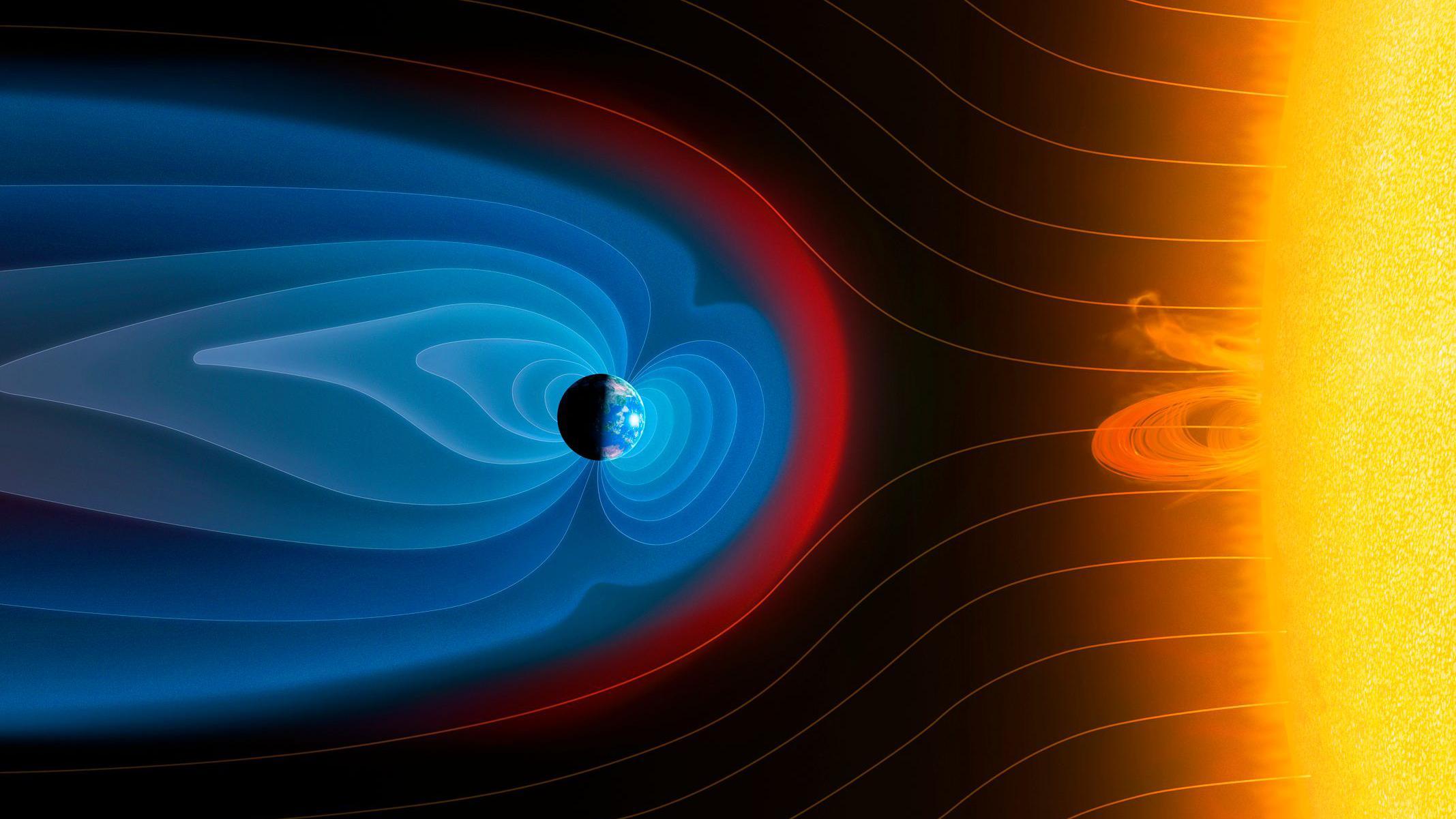Scientists describe him as “an agent of chaos.”
This is an “ambipolar field” surrounding the Earth that has just been discovered by NASA’s Endurance rocket.
The countryside, experts say, is a fundamental piece in the way our planet works and now, for the first time, they have managed to measure it.
Until now, two energy fields that our planet creates were known.
The first is the gravitational field, which is responsible for maintaining our atmosphere. If there is not enough gravity, the atmosphere would escape into space.
The second field is the magnetic field. It is the shield that protects our planet from the solar wind, the stream of charged particles released by the Sun.
Now, after years of searching, the third field has finally been located: the ambipolar one.
Its function is to counteract gravity and expel particles into space and, scientists say, it is as fundamental as the gravitational and magnetic fields.
Old hypothesis
The hypothesis of the existence of an ambipolar electric field was first formulated more than 60 years ago.
This field was believed to drive our planet’s atmosphere to escape into outer space above Earth’s north and south poles.
“Every time a spacecraft flew over Earth’s poles, you would feel this supersonic wind of particles, called the polar wind, flowing out into space,” said Glyn Collinson, principal investigator for the Endurance rocket mission at NASA’s Goddard Space Flight Center.
“There was thought to be some invisible force lurking there responsible for this outflow. But we had never been able to measure it before because we didn’t have the technology,” adds Collinson, lead author of the study on the discovery published in Nature.
To analyze what this invisible force was all about, the team of researchers created the Endurance rocket and in May 2022 they launched it from Svalbard, a small island north of Norway.

“Svalbard is the only rocket field in the world where you can fly through the polar wind and make the measurements we needed,” said Suzie Imber, a space physicist at the University of Leicester in the United Kingdom and co-author of the study.
The Endurance reached an altitude of 768 kilometers and landed 19 minutes later in the Greenland Sea.
During the 15-minute suborbital flight, Endurance measured a change in electrical potential of just 0.55 volts.
“Half a volt is nothing, is it? It’s about the same power as one of those little watch batteries,” Collinson explains.
“But that is exactly the amount needed to explain polar wind escape,” he adds.

Counteract gravity
Hydrogen ions, the most abundant type of particle in the polar wind, experience an outward force from this field 10.6 times stronger than gravity.
That, researchers say, is more than enough to counteract gravity — in fact, it’s enough to propel them into space at supersonic speeds.
Basically, the ambipolar field “lifts the heavens,” shaping the ionosphere (a layer of the upper atmosphere).
“It’s like a conveyor belt that lifts this atmosphere into space,” Collinson explains.
The field is “ambipolar” because it works in both directions. The ions drag the electrons down as they sink under gravity.
At the same time, the electrons lift the ions to greater heights as they try to escape into space.
And it lifts charged particles in our upper atmosphere to greater heights than they would otherwise reach, perhaps shaping the evolution of our planet in ways yet to be explored.
The discovery of Endurance, researchers say, raises many questions that can now begin to be answered.

For example, what is the exact function of this field and how has it shaped our planet.
According to Glynn Clllinson, the ambipolar field has probably had an impact on the evolution of the atmosphere and perhaps even left its mark on the oceans.
Although there are still many unanswered questions, the fact that this third energy field of the Earth has been measured for the first time opens up many new avenues for exploration.
“Any planet with an atmosphere should have an ambipolar field,” Collinson says.
“Now that we’ve finally measured it, we can begin to learn how it has shaped our planet and others over time,” he concludes.
Continue reading:
* NASA discovers a “dent” in the Earth’s magnetic field: What consequences will it have for the planet?
* What does it mean for the Earth to reach its maximum speed?
* Where is the Earth’s equator located within Ecuador?

Click here to read more stories from BBC News Mundo.
You can also follow us on YouTube, Instagram, TikTokX, Facebook and in our new whatsapp channelwhere you’ll find breaking news and our best content.
And remember that you can receive notifications in our app. Download the latest version and activate them.
- 6 things we learned about Earth thanks to meteorites and comets
- The rapid and unexpected change in the Earth’s magnetic field that scientists cannot explain
